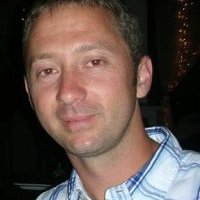
Matt Bahm
Supervisors: Thomas G. Barnes and Kent C. Jensen
Phone: (541) 753-3099
Address: Institute for Applied Ecology
Conservation Research Program
P.O. Box 2855
Corvallis, Oregon 97339
Phone: (541) 753-3099
Address: Institute for Applied Ecology
Conservation Research Program
P.O. Box 2855
Corvallis, Oregon 97339
less
Related Authors
Benjamin VanderWeide
Kansas State University
Eugene Schupp
Utah State University
Damian A Vraniak, PhD
Vanderbilt University
Kyle Joly
National Park Service
Helen Enander
Michigan State University
InterestsView All (29)







Uploads
Papers by Matt Bahm
stands in wetlands, moist meadows, and riparian areas. We implemented a reed canarygrass removal
study at five sites in eastern South Dakota using imazapyr, imazapic, and glyphosate individually and in
combination. Eight treatments (five in fall, two in spring, and a control) were applied at each location
in fall 2005–spring 2006. Herbicides were applied over clipped vegetation that had residual vegetation
removed. Reed canarygrass cover was 93% in untreated plots, and ranged from 21%–66% in herbicide
treated plots at the conclusion of the study. Herbicide treatments containing imazapyr provided control
for two growing seasons.
stands in wetlands, moist meadows, and riparian areas. We implemented a reed canarygrass removal
study at five sites in eastern South Dakota using imazapyr, imazapic, and glyphosate individually and in
combination. Eight treatments (five in fall, two in spring, and a control) were applied at each location
in fall 2005–spring 2006. Herbicides were applied over clipped vegetation that had residual vegetation
removed. Reed canarygrass cover was 93% in untreated plots, and ranged from 21%–66% in herbicide
treated plots at the conclusion of the study. Herbicide treatments containing imazapyr provided control
for two growing seasons.